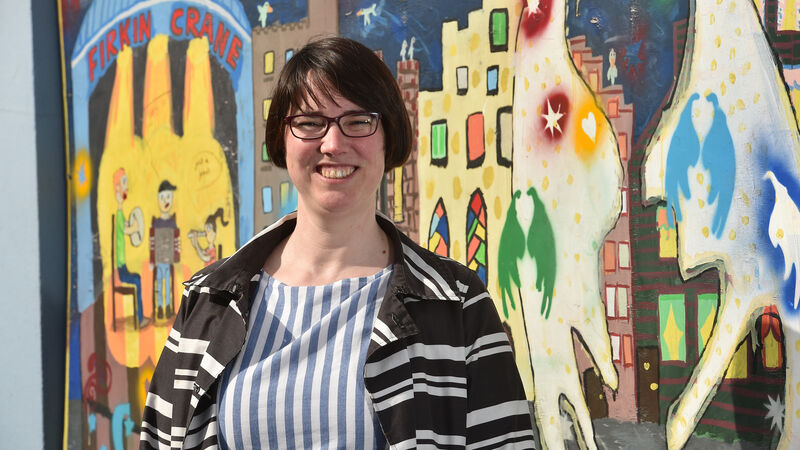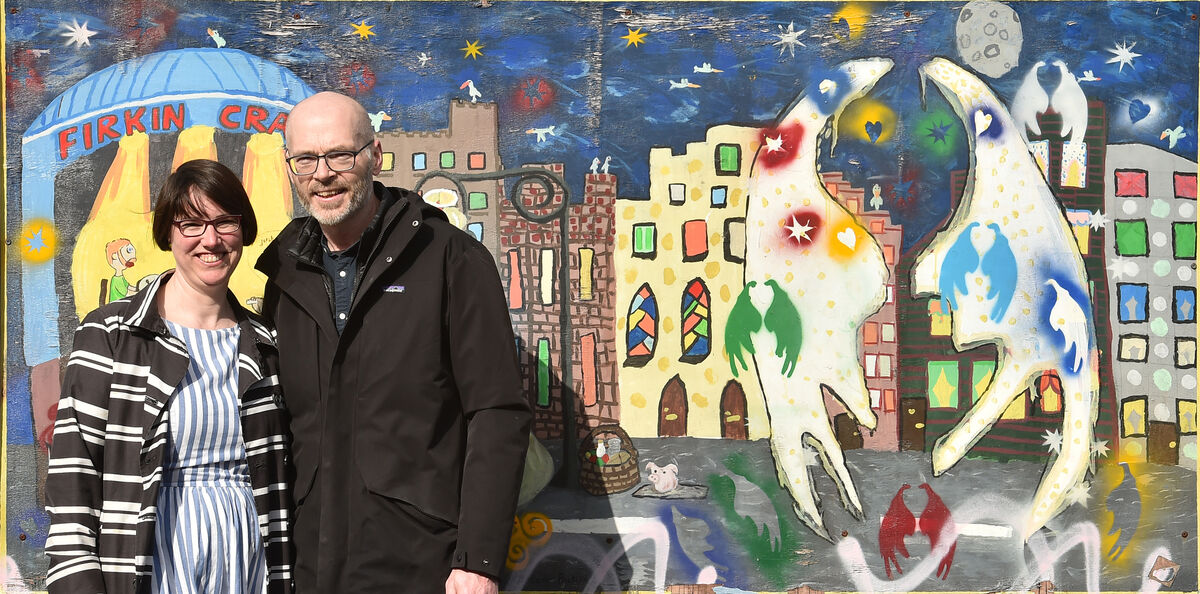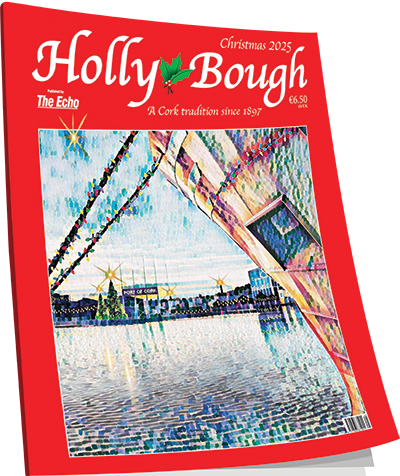Why I've got designs on a greener future...

Jude Sherry of anois.org design. Picture: Dan Linehan
JUDE Sherry is listing where she bought items of her colourful summery outfit. “Second- hand,” she says, pointing to her red and white floral dress.
“This cardigan is second-hand too. And these earrings are made of recycled materials; I bought them on Etsy from an Irish designer.”
Jude is an industrial designer. With an undergraduate degree in industrial design and an MA in integrated environmental management, she’s a passionate advocate for the ability of design to solve some of the mounting environmental threats posed to the planet by human activity.
But first, she has a message that sometimes gets lost in the noise these days, with ‘sustainability’ a buzz-word and companies jumping aboard the trend for eco-friendly products: we should be starting with buying less.
“In general, the most sustainable product is the existing product,” she says. In her own life, this means second-hand is her first choice when she’s buying clothes.
“We live quite a simple life,” she says. “I don’t go into shops unless I need something. I buy second-hand as much as possible and that’s where I really miss Amsterdam, for the amazing second-hand shops.”
Jude and her partner, Frank O’Connor, are recent arrivals in Cork, having lived and worked in Amsterdam and Cardiff. She was born in North County Dublin, but the couple were drawn to Cork’s friendliness and size; they relocated here in 2018, and founded their systems design agency, Anois.

In their business, the duo provide training and advisory services to policy-makers.
“What we’d like to do more of is working with companies,” Jude says. “We work with them on the design side, but also on their business model.
To Jude, there is no doubt at all that we’re in the throes of a global crisis when it comes to waste and resource use. And the environmental impacts of the current throw-away culture we live in are enormous. It’s time to switch to a circular economy.
“On average, 98% of our products are only used for about six months,” she says.
“We have a massive problem with waste, and we’re running out of space. The EU will not fund new landfills and Ireland is a small country, but for the amount of materials we ship into Ireland, we ship a lot of that out again as waste.
“Design is a key element to solving this. Designers have an opportunity to bring those values that might have been lost, like valuing skills of repair, and put them back on a pedestal in society.”
Ordinary consumers might be forgiven for thinking that repair is a thing of the past: with white goods in particular, the advice more often than not these days is to throw out the broken fridge or washing machine and buy a new one.
Some 63,481 tonnes of waste electrical goods were scrapped in Ireland in 2020, according to WEEE’s annual report — 38,724 tonnes of this were collected for recycling by WEEE Ireland, the waste electrical goods non-profit.
But what if products were being designed for repair, instead of being scrapped? This is the idea behind the so-called “circular economy”.
Legislators both here in Ireland and at an EU level see a need to enforce regulations on manufacturers with a throw-away design practice. So-called ‘Right to Repair’ measures brought in by the EU in March aim to make manufacturers supply spare parts. In Ireland, a draft circular economy bill was published this June.
Previously, while Jude and her partner lived in Cardiff, they provided advice to an innovative furniture company called Orangebox on precisely the type of circular design that these legislative moves are hoping to encourage.
“You can change the seat covering if you’re going for a new colour scheme, they can take off and replace parts. By designing for disassembly, they actually improved their design for assembly too. An office chair can have hundreds of parts, but they ended up with 15. So they save about a million pounds a year, because they’ve reduced the number of parts and the chairs fly off their production line.”
Since Jude and Frank moved to Cork, they’ve become highly vocal about a local issue that at first glance doesn’t appear to be an environmental concern, rather a societal one: dereliction.
They have documented what they say are more than 400 derelict properties within a 2km radius of the city centre, posting them in a thread on their social media accounts.
They’ve also produced a report calling on Cork City Council to be the first local authority in Ireland to eliminate dereliction.
“The derelict houses are just the most visible, but there are hundreds more vacant.
“Amsterdam is also an old city built on a marsh, with a lot of warehouses. They also had a massive dereliction problem, in the 1970s and ’80s, and I knew they had solved it.”
Cork City Council operate a derelict sites register, and in 2020, a derelict sites levy charged to the owners of crumbling buildings was increased to 7% of the property’s value per year, in a bid to tackle the problem. But enforcement is an issue.
While 30% of the levies owed in 2020 were collected, so far this year, just 3% of the €1.7 million owed has been collected by the council, according to their latest executive report.
“The levy should be collected by Inland Revenue and not by city council,” Jude says. “Collection rates would be much higher then, and it doesn’t require a change of law. And we’d like to see all the properties on the derelict sites register. It’s a much bigger problem than we’re seeing.”
Amidst the clamour for new builds to mitigate the housing crisis, few people are considering the environmental impacts of another building boom. Working to restore what we already have makes sound environmental sense.
“If you build a new house, depending on the building it can take up to 80 years to recover the energy savings you might get from its increased energy efficiency,” Jude says.
“From an embedded carbon perspective, the most sustainable building is the pre-existing one, but that’s also at a resource level.
Given the scale of the environmental challenges we face, how does Jude stay optimistic that they can be solved?
“I’ve definitely gone through a few crises with it,” she says with a smile.
“I think I’m a realist in terms of what needs to change, which is a lot.
“My optimism comes from small companies in Cork and knowing that people want change.
“The challenge is making the more sustainable option the more attractive and easy option. There’s always hope, and things can change quickly, when there’s enough will.”






 App?
App?





